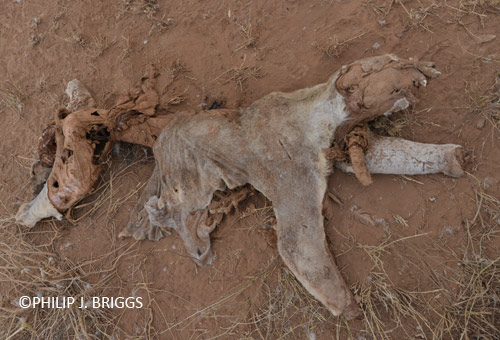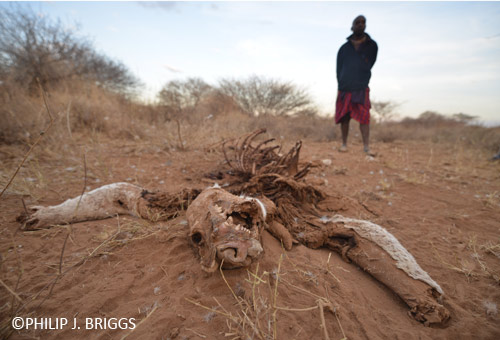Lion killed at the border

Warning: Graphic photos below
Lions know no boundaries and they usually cross the Kenyan-Tanzania border as they wish. A few weeks ago, the sub-adult males from Nooldoinyo’s pride crossed into Tanzania. They settled in an area called Oldepe where there was a concentration of temporary settlements mostly inhabited by Morans (warriors) with their family livestock who were following the sparse rain showers received a few days earlier. The majority of the Morans came from areas as far as Namanga and Arusha where the concept of wildlife conservation has very little exposure or significance. A few days ago, at around four in the afternoon, three lions from the above pride killed three cows while they were grazing. The herder ran home to alert the Morans who responded immediately. They found the partially eaten carcasses of the cows but instead of staying with the cow’s bodies overnight to protect them until they could be transported home the next day, they decided to merely erect some tree branches around the carcasses and went home. The lions returned during the night and finished eating what remained of the carcasses.
When the Morans returned early the next morning, they found the fully devoured carcasses and the lions still on the scene. Realizing that they would have to explain to the elders why they had left the carcasses of their cows at the lion’s disposal, (as opposed to bringing the meat home for local consumption) they decided to save face by killing the lions. The hunt was easy as the lions, with full bellies from having just gorged themselves, could only run for small distances at a time. The Morans succeeded in killing one of the sub-adult males, but during the conflict the lion managed to badly injure one of the warrior’s (he will be OK though). The other two lions escaped, fleeing back to Kenya. This is the first time that Nooldoinyo’s pride. which has developed a reputation for being notorious livestock killers, have had a member killed. We have yet to identify the individual lion that was killed as the traits that we would use to positively identify the lion (whisker spots, nose spots, ear notches etc.) had already been removed from the lion before we arrived. We repositioned the carcass to see if we could find any characteristics to help us figure out the lion’s identity, but found none. We will have to wait and see which lion is missing from the group in future sightings.

As soon as we heard about the hunt, we immediately came to the site and convened a cross-border meeting supported by our partner AWF to address the issue. The meeting was attended by several stakeholders, including AWF, Enduimet Wildlife Management Area officials and AWF/Big Life supported community game scouts. Together we have planned a series of awareness creation activities in an attempt to nip these retaliatory killings in the bud.
In the Amboseli ecosystem in Kenya, no lions have been killed in the areas where Lion Guardians operate. Help support the Lion Guardians expansion into the area across the Tanzania Border by visiting our website. Donate now.




Leave a Reply